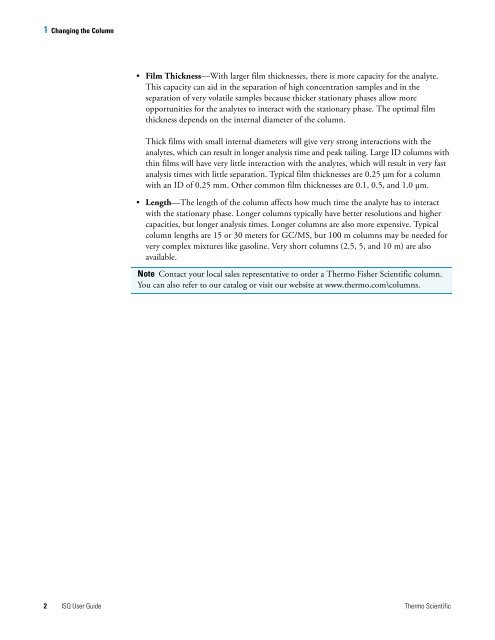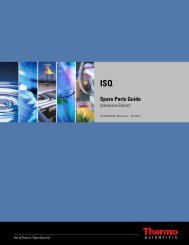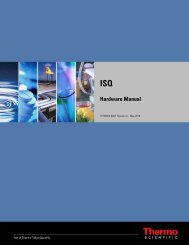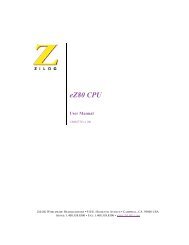ISQ User Guide - Write Frame of Mind
ISQ User Guide - Write Frame of Mind
ISQ User Guide - Write Frame of Mind
You also want an ePaper? Increase the reach of your titles
YUMPU automatically turns print PDFs into web optimized ePapers that Google loves.
1 Changing the Column<br />
• Film Thickness—With larger film thicknesses, there is more capacity for the analyte.<br />
This capacity can aid in the separation <strong>of</strong> high concentration samples and in the<br />
separation <strong>of</strong> very volatile samples because thicker stationary phases allow more<br />
opportunities for the analytes to interact with the stationary phase. The optimal film<br />
thickness depends on the internal diameter <strong>of</strong> the column.<br />
Thick films with small internal diameters will give very strong interactions with the<br />
analytes, which can result in longer analysis time and peak tailing. Large ID columns with<br />
thin films will have very little interaction with the analytes, which will result in very fast<br />
analysis times with little separation. Typical film thicknesses are 0.25 μm for a column<br />
with an ID <strong>of</strong> 0.25 mm. Other common film thicknesses are 0.1, 0.5, and 1.0 μm.<br />
• Length—The length <strong>of</strong> the column affects how much time the analyte has to interact<br />
with the stationary phase. Longer columns typically have better resolutions and higher<br />
capacities, but longer analysis times. Longer columns are also more expensive. Typical<br />
column lengths are 15 or 30 meters for GC/MS, but 100 m columns may be needed for<br />
very complex mixtures like gasoline. Very short columns (2.5, 5, and 10 m) are also<br />
available.<br />
Note Contact your local sales representative to order a Thermo Fisher Scientific column.<br />
You can also refer to our catalog or visit our website at www.thermo.com\columns.<br />
2 <strong>ISQ</strong> <strong>User</strong> <strong>Guide</strong> Thermo Scientific






